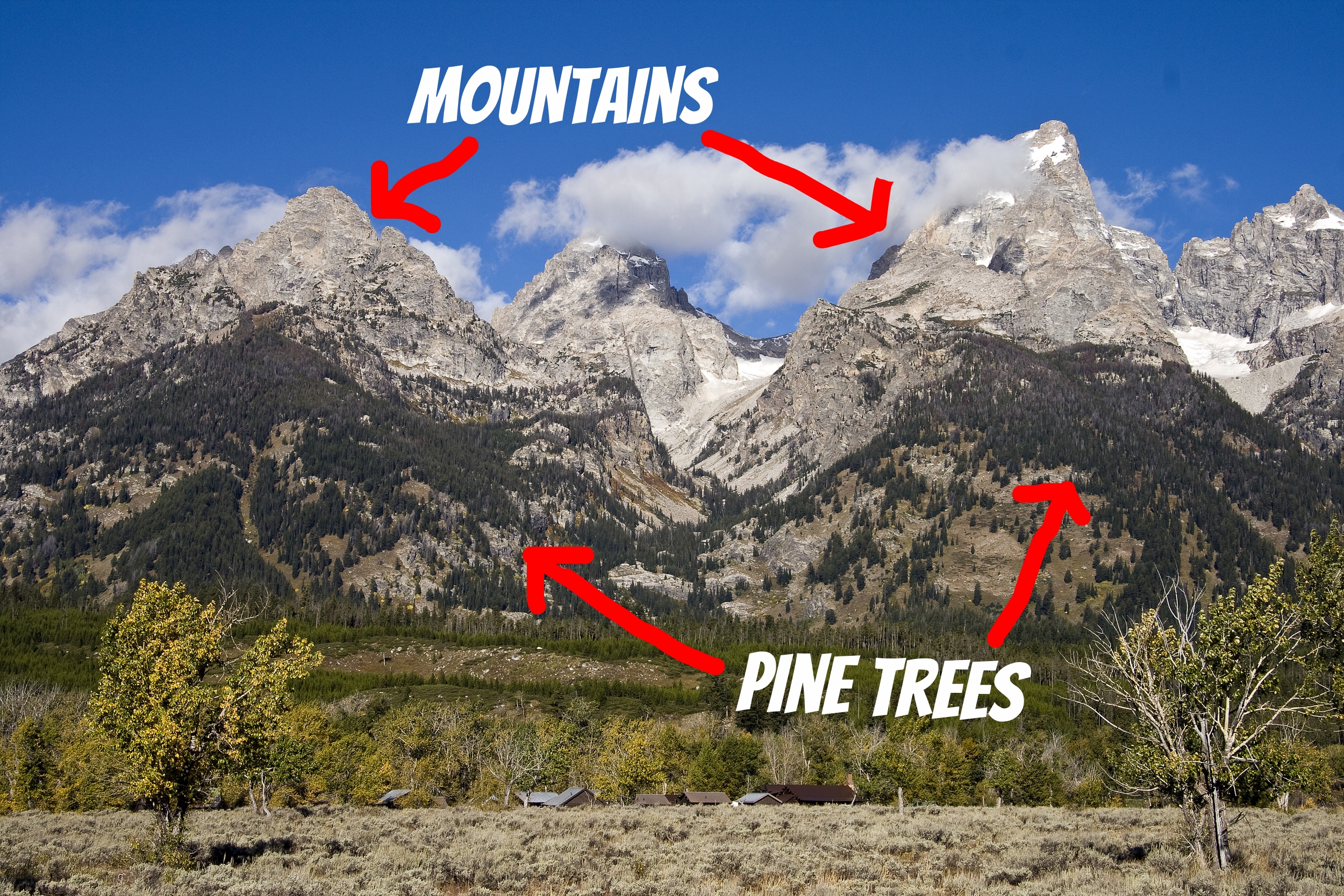Though we humans can set down an iPad in our house and two hours later have no idea where it is, a Clark’s nutcracker would never have that problem.
In fact, a Clark’s nutcracker would not only find the iPad two hours later. A Clark’s nutcracker could even find the iPad six months later, even if it was buried under a foot of snow.
How can I make such a bold claim, particularly since no Clark’s nutcracker on Earth owns an iPad? Because Clark’s nutcrackers are the masters of finding things. Well, certain things that are even smaller than iPads. Namely, pine tree seeds.
Clark nutcrackers live on tall mountains in the western United States and Canada (basically in most of the dark red places on the left side of this map).
Any animal that lives on a mountain has a seasonal problem. For many of the months of the year, the top of that mountain will be covered with snow, and there won’t be any food to eat. Some animals, like elk, deal with this by migrating to lower elevations during the winter, where it will be warmer and they can find more food. Some, like grizzly bears and marmots, deal with it by hibernating (basically sleeping all winter until it warms up again and plants start growing so they can eat them). Clark’s nutcrackers deal with winter by hiding food all over the place.
Mountains out West are covered with pine trees, and the pine trees are covered with pine cones.
Though you may think of pine cones just as decorative objects your Grandma has in a basket by her fireplace, pine cones are actually the place where pine trees hold their seeds until they are ready to release them. Clark’s nutcrackers are able to use their long beaks to break into pine cones to get the seeds before they drop on the ground. You can watch a video of a Clark's nutcracker ripping apart a pine cone here:
Clark’s nutcrackers can get all the pine seeds they want to eat in summer and fall, but in winter and spring there aren’t enough seeds left to even have a snack. To make sure they don’t starve in the winter, Clark’s Nutcrackers spend the fall burying pine seeds all over the mountain that they will eat later.
This behavior is kind of like if you were only able to get cookies for a few months out of the year. Being much better at long term thinking than the average kid under the age of 14, during the months when cookies are abundant, you decide to hide cookies around the house that you can eat during the cookie-free months. You don’t want to hide all your cookies in one spot in case one of your brothers and sisters finds that hiding place. They could eat all your cookies all at once and you would be out of cookies for the rest of the year. Instead, you hide one or two cookies in a bunch of spots around the house. That way your brothers and sisters may find a couple of your hiding spots, but they won’t find all of them, so you would be guaranteed to have cookies throughout the year.
Clark’s nutcrackers basically do the same thing. Scientists estimate that every fall, each Clark’s nutcracker may make 5,000 to 20,000 hiding places full of pine tree seeds, and may bury up to 100,000 seeds in one year.
As amazing as that is, what is even more amazing is that, months later, each Clark’s nutcracker can find those thousands of hiding places, even when they are buried under snow.
Scientists have done experiments to try figure out how Clark’s nutcrackers are able to do this. Based on the results of these experiments, they think that Clark’s nutcrackers basically take a mental photograph of the trees, rocks and other things around each hiding place. This allows them to be able to remember exactly where the hiding place is in relation to those objects. Then in winter when they come back to the general location of a hiding place, they look at those objects sticking out of the snow and hop around until they are in the exact same position as the photograph in their head. Then they can dig down and enjoy a pine seed lunch.
In this one sense, Clark’s nutcrackers are much smarter than we are. But thanks to our problem-solving and tool-making abilities, we can get around this. We make maps, GPS devices, Find my iPhone apps, and other tools to help us find things when we can’t remember where they are. And we ship food from all over the world to our local grocery store to make sure we always have food to eat even when there's three-feet of snow outside. (So, you don't don't need to hide cookies all over your house to make sure you have cookies to eat throughout the year. Unless, of course, you do).
To learn more about Clark's nutcrackers, read my book A Day on the Mountain.
Online References and Resources
All About Birds. "Clark's Nutcracker."
https://www.allaboutbirds.org/guide/Clarks_Nutcracker/id
The Cornell Lab of Ornithology. "Soul Mates: Nutcrackers, Whitebark Pine, and a Bond That Holds an Ecosystem Together." Article by Gustave Axelson
https://www.allaboutbirds.org/soul-mates-nutcrackers-whitebark-pine-and-a-bond-
that-holds-an-ecosystem-together/
Encyclopedia of Life. "Nucifraga columbiana - Clark's Nutcracker."
http://eol.org/pages/1177487/overview
Living Bird Magazine. "How Can They Possibly Do That?" Article by Jack Connor.
http://digital.livingbird.org/livingbird/autumn_2013
National Geographic. "How a 5-Ounce Bird Stores 10,000 Maps in Its Head." Article by Robert Krulwich.
http://phenomena.nationalgeographic.com/2015/12/03/how-a-5-ounce-bird-stores-10000-
maps-in-its-head/
Yellowstone National Park. "Clark's Nutcracker." Video.
https://www.youtube.com/watch?v=vrK6w3WPvWA
Photos and Images:
Click the photos and images used above to find their sources.



